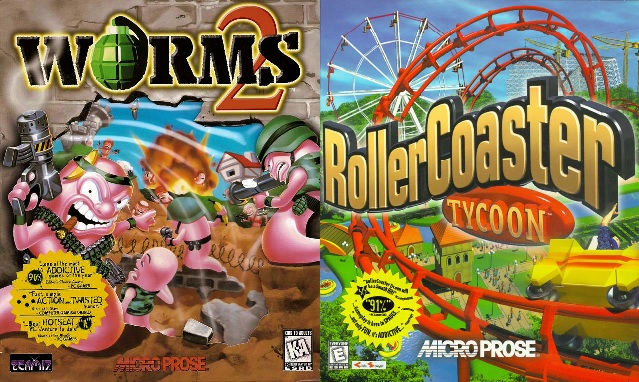Replicating the Retro Experience: Non-Comprehensive Options Commentary
- baronsfel001
- Sep 17, 2022
- 7 min read

Barroto's IBMulator takes a step further than most by framing the screen with a simulated image of the actual display hardware; Steve Snake's Kega Fusion does similar for the Sega Game Gear. Some people may see it differently but my view on the purpose of nostalgia is getting as close to a pure experience as possible. There are multiple ways to accomplish this, some private and others commercial. The first approach can usually be customized to heart's content between replicating the original and enhancing it to modern standards; commercial re-releases are typically enhancements, sometimes with the option of toggling to the original graphics.
As time passes the more emulation becomes necessary due to unavailability of the original hardware. It is no light concept that "time machine" is a term used among retro enthusiasts who still possess these working systems. But while emulation covers the core computer or console ground well, peripherals are a different matter generally harder to replicate.
Platformers, adventures, strategy games and naval command simulators work fine with keyboard, mouse and/or gamepad; flight simulators and first-person shooters are made to be more immersive. Originally hardware limitations had these controlled by keyboard as well, but their success prompted innovation to overcome this. This cycle that has repeated many times over the decades: demands of killer app genres (especially games) drive hardware development as well as greater exploitation of the current generation.
First Waves
Simulators (not emulators) exist for pre-CPU arcade games from Pong to Monaco GP; such replication is the only option in the era before common computer chipsets. When that era came along in the late 70s, 8-bit computer and arcade systems often used the same CPUs with the differences in ancillary hardware, a trend that persists with today's arcade boards either identical or related to those found in home PCs.
The first wave of home computers as they are known today is considered to have started with the trifecta of the TRS-80, Commodore PET and original Apple II in 1977, all of which used the same CPUs as game consoles and arcade machines would well into the following decade. The first and second generation of consoles experimented with what would make an ideal default controller, the Atari 2600 establishing the first favored standard with its digital joystick and DB-9 connector (the latter kept appearing on non-IBM computers and Sega consoles into the 90s), though specialized paddle and wheel controllers started to be made options as well. Today's games (and today's emulators of these vintage systems) eased into a new prevailing standard: digital control via directional pad and analog control via [mini-]joystick(s).
This highlights a key advantage of emulation: the level of immersion and/or authenticity can be tailored through configuration with modern controllers of which there are greater options available today than in the past. Want to treat a joystick as digital to replicate the original experience or see how much better a game designed for digital joystick plays with a gamepad? Want to play any vintage flight or driving title with your USB stick or wheel? There are still some experiences out of reach due to physical limits (Hang-On's motorbike leaning controls and R360 come to mind) but any decent emulator today will be able to configure with any choice control scheme.
The IBM PC Difference
It is an amusing fact of computer history how similar the Apple II and IBM PC are to each other, naturally not in terms of power and capability but in their concept and execution. It would be most fortunate for Apple as a company that the II series had such open architecture allowing for third-party upgradeability, because troubles with older Macintoshes and other failures meant they had to survive by continuing to market Apple II way after its prime. IBM released a beast of its own with their 5150 PC, establishing new standards for computing that prevail today without IBM itself after their many failed attempts to redefine standards in a manner acceptable to the market.
Apple IIs were capable business computers though built with gaming in mind, while IBM as a business-oriented company took the opposite approach; that both had open architecture with analog interfaces was simply logical for the time. Early IBM color graphics supported composite color banding which was standard on Apple II. Joysticks and mice translated naturally to games, though both could be used for the slew of non-gaming purposes that prompted their original invention. Floppy disks were standard in both while hard drives were not, and the initial versions of both architectures also supported cassettes as storage medium.
The killer app of business computing was the spreadsheet which first appeared on Apple II. Once the machines dedicated to the role were superseded by more affordable computers word processing made the migration. The same occurred with terminal emulation software replacing the original client systems in a process that eventually culminated with microcomputers attaining sufficient power and memory to become servers themselves, ending the mainframe era. Apple II helped pioneer but the higher speeds, RAM, and display resolutions of the IBM PC perfected home and professional computing as it is today.
And yet while business applications may have driven higher memory, it was games that prompted newer CPU developments. OS/2 was supposed to usher in the 80386 era with a bang but it only made a spark due to being caught between IBM's proprietary push with PS/2 and Microsoft's necessity of maintaining backwards compatibility. Instead to push to 386 was accomplished by Access Software's Links, the need for math coprocessing prompted by Spectrum Holobyte's Falcon 3.0, and the drive to 486, Pentium and beyond was with id Software at the wheel.
While the core hardware was getting more powerful alongside expanded graphics and sound, the aging analog joystick architecture was showing its limitations which led to a pair of creative approaches named after the companies that first implemented them: Thrustmaster and CH. Both used all 4 buttons and at least 3 of the 4 axes supported by the driverless interface, only differing in their execution which made it a matter of game developers supporting the hardware by programming their control schemes around it. Around the same time another company, Advanced Gravis, brought console-style gamepad support to PC with the simple method of emulating digital control by making directional pad presses full-analog.
The Microsoft Connection
The house of Bill Gates has driven personal computing from the beginning, whether Altair BASIC on the software side or Microsoft's start in hardware with Apple II expansion cards. Pick any computer from the late 70s to mid-80s at random and chances are it comes with some dialect of Microsoft BASIC, including Macintosh of which Microsoft was among the first and strongest third-party supporters. Yet their bread and butter was always the software (plus some hardware such as mice) that powered and made success of the IBM PC and its staggering number of clone compatibles.
This is why DOS gaming has a unique place in the world of emulating old systems. Running programs in Atari DOS or Amiga Workbench is the same as emulating console games: the software has to be fooled into believing it is running on the target hardware. The same approach could be made with vintage PC systems which is how PCem and its forks (I favor 86box) work, but a more accessible option is virtualizing the environment while either emulating or translating key components which is what DOSBox and many virtualization programs such as VMWare do. While further from the original architecture it gets the more difficult boxes need to be checked to keep it working, it works so remarkably well because for 4 decades now Microsoft has established its designs as second-to-none when it comes to backwards compatibility.
A chicken-or-the-egg contemplation: would gaming have become so established around Windows had it not been for Bill Gates so appreciating its importance to computing, or would Windows have been so successful at all if not for its extensive support by gaming companies? Microsoft's first game controller, the Sidewinder 3D Pro, was forwards-compatible with the new DirectX yet still included a toggle switch between Thrustmaster and CH modes, and the later Sidewinder GamePad utilized DirectX to reach the maximum potential of the PC gameport before USB finally arrived to replace it. DirectInput gave game developers capacity to do with any controller what had been done by Thrustmaster and CH years prior with keyboard passthrough and complex programming software: map any function to any button or axis on-the-fly.
Closing Thoughts
How does all this relate to the point of today's blog post? My emphasis is that graphics and sound card standards are one thing, the emulation of which was accomplished mostly in-full long ago, but another is input from the era that unique flight, racing, and even strategic combat controllers were proprietary. A few that are really unique like the Logitech Cyberman and SpaceOrb 360 had mixed reviews anyway, but between joystick keymapping as available in DOSBox and many emulators plus the available emulation of Thrustmaster and CH standards in DOSBox and other programs, these old control calls can translate to modern USB controllers easily which may do better at accomplishing the immersion these gadgets were created to offer in the first place.
And if the purpose is less deep immersion and more replication of the original experience there are plenty of clone controllers, licensed or otherwise, that plug via USB and/or Bluetooth which are ideal for retro console emulation. Those of us fortunate enough to own time machines with these old peripherals can experiment with playing more like in the old days, but as original hardware whether Thrustmaster or Roland stops working due the ravages of age it is nice for emulation to pick up from there. I remember years ago when emulation was conflated with piracy, yet here we are today with it as industry standard in the retro gaming market. It is sad to see old hardware go, but in the greater scheme of things I believe we are living in a greater age of opportunity for retro gaming immersion than ever before.
Terms used are confusing even to me sometimes so I figured I should record in my own words...
Simulation: software-based likeness of the function of a particular analog device or discrete logic build; if it is built with vintage-style circuits and mechanisms emulation of such is impossible due to lack of any digital processes to translate (many exist but are good for their particular architecture only)
Emulation: software-based translation of hardware calls enabling program execution on otherwise non-compatible hardware, often used in computing under the surface which is how backwards compatibility is accomplished on successor systems; sometimes the term is all-encompassing in regard to console and computer emulation programs but strictly speaking such software is the collective emulation of its many hardware components (the vast majority of programs able to run other-than-PC computer programs and arcade or console games fall into this category)
Virtualization: very similar to emulation and accomplishes similar purpose, though geared more towards secure running of alternative operating systems on hardware that is still compatible to a degree; certain components (typically graphics and sound cards) may still be emulated to facilitate this compatibility but in general system calls are more transparent leaving less overhead with the disadvantage that software compatibility is not great past certain thresholds (Virtual PC, VirtualBox and VMWare fit this category while DOSBox and its forks straddle the line due to how many of its components are emulated)





Comments